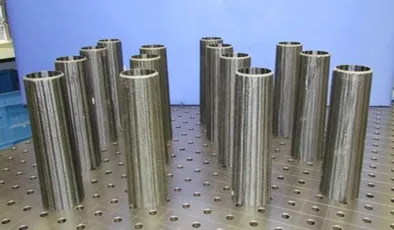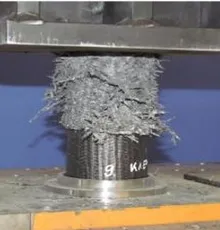HIVOCOMP – Advanced Materials Enabling High-Volume Road Transport Applications of Lightweight Structural Composite Parts
In addition to being lightweight for fuel efficiency, high-performance composite materials for the transport sector should have the potential to be used in fast production processes. Currently, production volumes tend to be limited to a few hundred or a few thousand units per year for aerospace or sports car applications.
Project Partners
Catholic University of Leuven, Volkswagen AG, Daimler AG, University of Perugia, Centro Ricerche Fiat S.c.p.A, Huntsman International LLC, ESI Group, Airborne Composites, Ecole Polytechnique Fédérale de Lausanne, University of Leeds, Samsonite Europe N.V., Benteler SGL Composite Technology GmbH, Fraunhofer Institute for Chemical Technology (ICT-A) Propex Fabrics GmbH, Bax Innovation Consulting S.L.
Duration
01.10.2010 – 30.09.2014
Funding authority
FP7-NMP - Specific Programme "Cooperation": Nanosciences, Nanotechnologies, Materials and new Production Technologies of the European Union
Motivation
The project HIVOCOMP changed that by developing two new high-volume materials for carbon fibre-reinforced plastic (CFRP) parts for cars and suitcases. Consortium partners built demonstrators using this new material for structural parts of a car. These included the inner bonnet, the rear seat back panel and the B-pillar between the front door and the back door.


Method
The first system that was developed involved advanced polyurethane (PU) thermoset matrix materials that showed improved mechanical performance and reduced cycle times when compared with the most commonly used epoxy matrix. Replacing this conventional matrix system with PU also enabled fast curing to be combined with high toughness and a high glass transition temperature. Nanoparticles added to PU resulted in further improvements in the processing (reduced resin viscosity and reaction kinetics) and in the thermal and electrical properties. Another HIVOCOMP breakthrough was to hybridise self-reinforced composites (SRCs) – polypropylene and polyamide – with carbon fibres. HIVOCOMP followed several strategies to develop two SRC versions. In the first case, a small amount of carbon fibres allowed SRC stiffness to increase without reducing toughness. In the second case, larger amounts resulted in increased toughness, with stiffness remaining high. Reduced production times were achieved through the thermoforming process. The advanced materials produced in HIVOCOMP result in short cycle times, showing unique promise for cost-effective, higher-volume production of high-performance CFRP parts.
Publications
Hine, P.J.; Bonner, M.; Ward, I.M.; Swolfs, Y.; Verpoest, I.; Mierzwa, A.: Hybrid carbon fibre/nylon 12 single polymer composites. Composites Part A: Applied Science and Manufacturing 65, 2014, 19-26
Acknowledgement
This project has received funding within the framework of the FP7-NMP - Specific Programme "Cooperation": Nanosciences, Nanotechnologies, Materials and new Production Technologies of the European Union under grant agreement No 246389 (“Advanced Materials Enabling High-Volume Road Transport Applications of Lightweight Structural Composite Parts”). This publication reflects only the author’s views and the European Union is not liable for any use that may be made of the information contained therein.


Contact Persons
Dipl.-Ing. Kalle Kind; Dr.-Ing. Swen Zaremba
Final Report
Download (pdf)